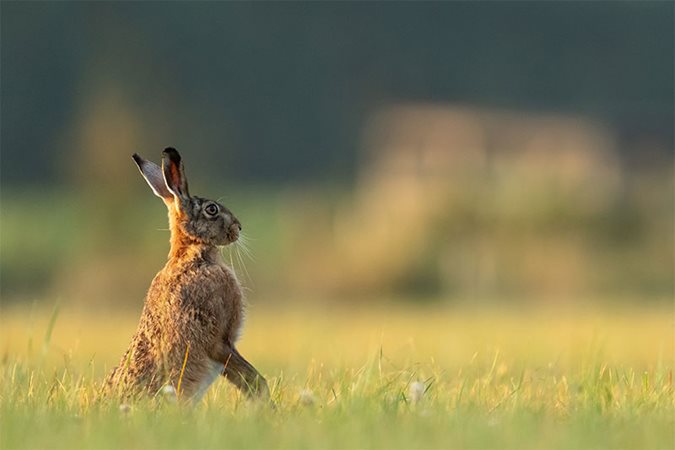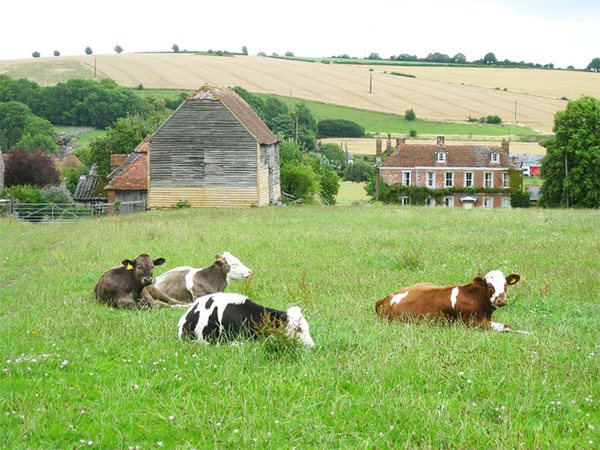Northamptonshire rural crime
Rural crime is on the rise, and it's a serious issue for communities, farmers and businesses.
Rural crime is about far more than the financial cost. The fear of crime can mean people are afraid to leave their homes, businesses and farms unattended, which adds to levels of rural isolation.
Calculating the cost of crime to a rural business is a lot more complicated than simply the replacement costs.
Downtime without valuable and appropriate equipment, hassle to sort replacements, dealing with dead or injured animals, clearing up a mess, and ultimately the mental and emotional stress.
In this Northants campaign, we're focusing on hare-coursing, the burglary of businesses and barns, and the theft of plant and vehicles.

This is the pursuit of hares with dogs, often for the purposes of betting. It takes place on areas of flat, open land where the dogs can easily and visibly pursue the hare. It's typically carried out by large groups of people who travel long distances.
It's illegal under the Hunting Act, but it also has other impacts. For example, fences and gates can be damaged by vehicles forcibly trying to gain access to land. Once in a field, it is common practise to film the chase from a moving vehicle, which can inflict significant damage to the field and any crops within it.
Signs to look out for
Farm machinery is often expensive and farms are dependent on it. A stolen tractor could mean crops can’t be harvested, or a stolen quad bike means livestock can’t be fed. There isn’t a big market for second-hand farm machinery in the UK, so high value items can often be stolen to order and then sent abroad.
Farmers have experienced violence when confronting thieves on their land, which is often remote and difficult to secure.
Criminal networks are also exploiting rural communties to meet a rising demand for high-end vehicles and their parts. Luxury 4x4s are being taken from country homes and fnding their way to ‘chop shops’ where they are dismantled for onward journey to Europe, Africa and the Far East.

Rural properties are often in isolated areas, which can make them easy targets for criminals looking to break-in and steal possessions.
Another worrying trend is the theft of guns from farms and rural homes. From 2017 to 2018, the cost of firearms stolen from rural residences grew by 45% and there are fears that these weapons are finding their way onto city streets to fuel more serious crimes.
Calculating the cost of crime to a rural business is a lot more complicated than simply the replacement costs.
Downtime without valuable and appropriate equipment, hassle to sort replacements, dealing with dead or injured animals, clearing up a mess, and ultimately the mental and emotional stress.
In this Northants campaign, we're focusing on hare-coursing, the burglary of businesses and barns, and the theft of plant and vehicles.
Hare-coursing

This is the pursuit of hares with dogs, often for the purposes of betting. It takes place on areas of flat, open land where the dogs can easily and visibly pursue the hare. It's typically carried out by large groups of people who travel long distances.
It's illegal under the Hunting Act, but it also has other impacts. For example, fences and gates can be damaged by vehicles forcibly trying to gain access to land. Once in a field, it is common practise to film the chase from a moving vehicle, which can inflict significant damage to the field and any crops within it.
Signs to look out for
- The most obvious sign is groups of vehicles parked in a rural area, perhaps by a gateway to farmland, on a grass verge, on a farm track or bridle path.
- They will usually be estate cars, four-wheel drives or vans. It will be obvious looking inside whether there is evidence of dogs or not.
- They often travel in convoy, with vans at the front and rear containing minders.
- They will often use binoculars to spot hares.
- Coursers will often walk along the edge of a field to frighten a hare into the open.
GIVE INFORMATION ANONYMOUSLY ON 0800 555 111 OR GO ONLINE HERE
Plant and vehicle theft

Farm machinery is often expensive and farms are dependent on it. A stolen tractor could mean crops can’t be harvested, or a stolen quad bike means livestock can’t be fed. There isn’t a big market for second-hand farm machinery in the UK, so high value items can often be stolen to order and then sent abroad.
Farmers have experienced violence when confronting thieves on their land, which is often remote and difficult to secure.
Criminal networks are also exploiting rural communties to meet a rising demand for high-end vehicles and their parts. Luxury 4x4s are being taken from country homes and fnding their way to ‘chop shops’ where they are dismantled for onward journey to Europe, Africa and the Far East.
Burglary of businesses and barns

Rural properties are often in isolated areas, which can make them easy targets for criminals looking to break-in and steal possessions.
Another worrying trend is the theft of guns from farms and rural homes. From 2017 to 2018, the cost of firearms stolen from rural residences grew by 45% and there are fears that these weapons are finding their way onto city streets to fuel more serious crimes.
GIVE INFORMATION ANONYMOUSLY ON 0800 555 111 OR GO ONLINE HERE
